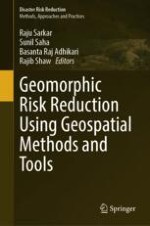2024 | OriginalPaper | Buchkapitel
8. Spatial Flash Flood Modeling in the Beas River Basin of Himachal Pradesh, India, Using GIS-Based Machine Learning Algorithms
verfasst von : Sunil Saha, Anik Saha, Abhishek Agarwal, Ankit Kumar, Raju Sarkar
Erschienen in: Geomorphic Risk Reduction Using Geospatial Methods and Tools
Verlag: Springer Nature Singapore
Aktivieren Sie unsere intelligente Suche, um passende Fachinhalte oder Patente zu finden.
Wählen Sie Textabschnitte aus um mit Künstlicher Intelligenz passenden Patente zu finden. powered by
Markieren Sie Textabschnitte, um KI-gestützt weitere passende Inhalte zu finden. powered by
